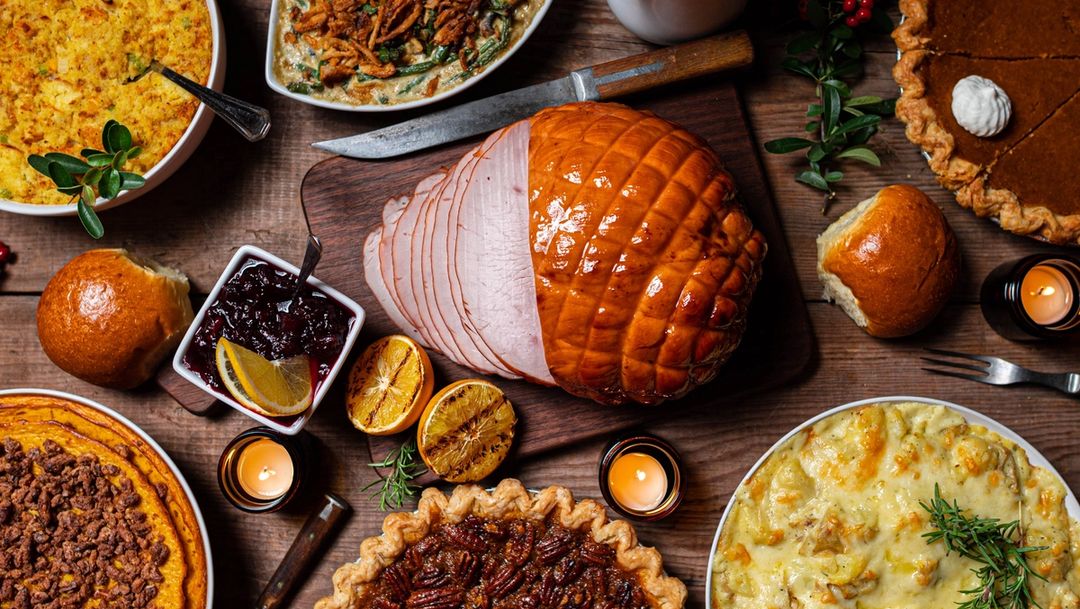The Secret to Hosting a More Sustainable Thanksgiving

Natalie Henderson, Chief of Staff
November 5, 2024

With simple swaps and a little mindfulness you can make Thanksgiving more sustainable than ever.
As a food-centric holiday, it may come as no surprise that Thanksgiving traditionally creates a lot of waste. Americans toss around 200 million pounds of turkey meat after Thanksgiving each year alone—not to mention 48 million pounds of sweet potatoes and 45 million pounds of green beans.
Apart from the obvious issue of food waste, the problem gets even bigger when food is disposed of in landfills instead of being composted. When it sits in a landfill, food doesn’t have access to proper oxygen, meaning that instead of eventually becoming soil and water, it breaks down anaerobically and releases methane, a harmful greenhouse gas. The U.S. Chamber of Commerce Foundation found that the amount of food waste generated is equal to 476,000 metric tons of CO2 emitted—a massive carbon footprint.
The good news is that our individual actions have the potential to make a different kind of impact. This Thanksgiving, make it a happier holiday for the whole planet with a few simple swaps and easy tips!
Low-Waste Grocery List
When we make our Thanksgiving grocery list, we usually start with what we need, not what we have. This year, before you start making your list, check your refrigerator and pantry to see what items you already have. You might have more than you think, and it can help cut down on a lot of waste if you don’t buy duplicate items. Once you’ve taken stock of what you have, make sure that you make a list and stick to it! You can save money and reduce waste by avoiding extra items that you don’t really need. Once you have your list ready to go, grab your reusable grocery bags and shop local!
Choosing a More Sustainable Turkey
Most people can’t fathom a Thanksgiving without turkey—but if you’re of the sustainable living mindset you might also be thinking about how to make this seasonal staple a little more planet-friendly. Opt for locally sourced, organic, and free-range turkeys. Locally sourced turkeys have a lower carbon footprint as they haven't traveled long distances to reach your table. Look for certification labels such as "Certified Organic" or "Animal Welfare Approved," ensuring that the turkey was raised with ethical and sustainable practices, as well as “Heritage Breed” turkeys. Heritage breed turkeys are traditional, slow-growing varieties that are often more sustainable than their industrially bred counterparts. They also tend to have a more diverse genetic makeup, making them hardier and less reliant on antibiotics or artificial interventions.
Consider Plant-Based Turkey Alternatives
If you want to swap out the turkey all together, there are some easy alternatives that are both kind to the planet and satisfying to the palate. Brands like Tofurky and Field Roast offer plant-based roasts that mimic the taste and texture of traditional turkey. If you prefer to stay away from the fake meats, try roasting a whole cauliflower as your meal centerpiece or simply opt for another crowd pleasing dish like lasagna!
When in doubt, extra plant-based side dishes are always a good idea. From macaroni and cheese to green bean casserole, most side dishes are already vegetarian and can easily be made vegan with a few swaps. And, as with any gathering, try to use these tips for reducing food waste and shopping for more sustainable ingredients.
Low-Waste Grocery Shopping
If you can, shop local for Thanksgiving groceries. It can help you cut down on your carbon footprint and help you only buy what you need. Produce from a farmer’s market is fresher and comes to you from a close distance. This means it takes fewer carbon emissions to get the food to you. If you don’t have access to a farmer’s market or other local produce, consider buying produce for Thanksgiving from Imperfect Foods or Misfits Market. Imperfect Foods and Misfits Market take produce that would otherwise go to waste and ship it directly to your home.
Composting Thanksgiving Food Scraps
If you don’t already compost, Thanksgiving is the perfect time to start! All of your food scraps from fruits and vegetables are the perfect beginnings for your compost pile. Make sure you have enough greens and browns for your pile, meaning use a mix of fruit and vegetable scraps, yard waste and even some paper or cardboard. Make sure you water your compost pile, and you will be all set. Just don’t throw any turkey or other meat or poultry scraps into your pile. Animal fats are hard to break down and can spoil a compost pile. If you can’t compost at home, look for a local composting facility to drop off your food waste.
What To Do With Thanksgiving Leftovers
Before you start cooking, be sure that you need all of the ingredients you are using because if you leave them packaged, they are easy to donate. Save any leftover packaged or canned food to donate to local shelters and food banks. You can cut down on waste and help the community!
Another alternative: Put your chef hat on and get creative in the kitchen. Meat and veggie scraps make great bases and broths for soups and stews. As for the mashed potatoes and cranberries, check out this list of recipe ideas.
How To Sustainably Store Leftovers
Inevitably, you will have Thanksgiving leftovers, and the best way to reduce your food waste is to eat them! When you store your leftovers, do so sustainably. Use glass containers, try using bowls and covering them with plates and look for jars to reuse. If you are having guests for dinner, ask them to bring their own containers for leftovers to take home. That way you can spread the leftovers and reduce waste. Make this Thanksgiving about giving thanks, not making waste.
Keep Reading
Refill is the New Recycle
The perfect way to start cutting out single use plastic from your home.











